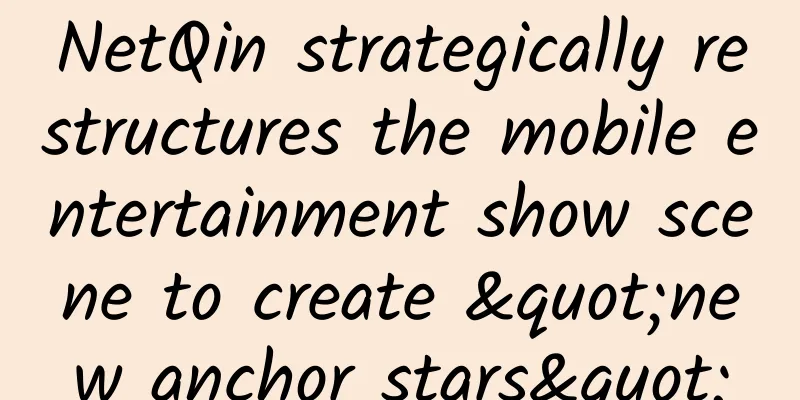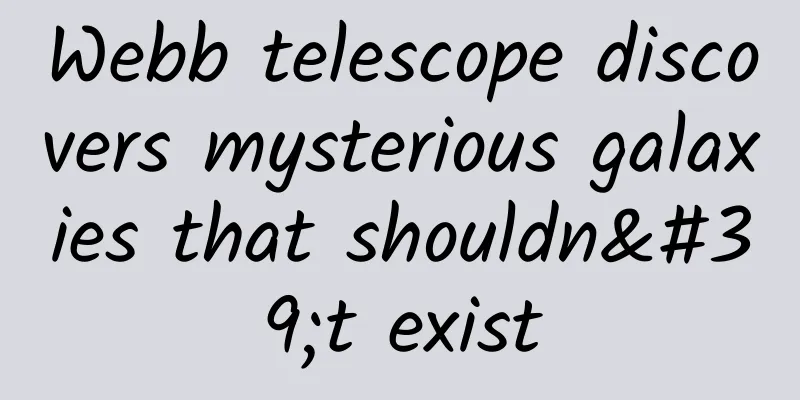[Energy History 03] Nuclear fission - the world owes her a Nobel Prize
![[Energy History 03] Nuclear fission - the world owes her a Nobel Prize](/upload/images/67f2648d6c974.webp)
|
Mass-Energy Equation In the "Einstein Miracle Year" (1905), Einstein published a total of 4 papers, in one of which, Einstein proposed a theory that the mass reduction of matter is m=E/c². In the beginning, Einstein's mass-energy equation was not the familiar form of E=mc². It can be said that Einstein's original form is more in line with the nature of mass and energy. Rather than saying that matter and energy can be transformed into each other, it is better to say that matter itself is energy. However, in the 30 years since Einstein proposed the mass-energy equation, no one knew what its use was. In the 1930s, someone finally discovered the tremendous power of the mass-energy equation, opening the door to nuclear weapons for mankind. The discoverer was Lisa Meitner, who was called the "German Madame Curie" by Einstein. Lisa Meitner (Image source: Wikipedia) Interestingly, before Meitner, there was a talented physicist who had the opportunity to open this door first, but he lost the opportunity because of a Nobel Prize. Fermi - A Mistake, a Nobel Prize In the early 1930s, physicists were studying a phenomenon: Why did the elements on the periodic table stop at element 92 (uranium)? At that time, Rutherford had discovered the structure of the atomic nucleus. Theoretically, as long as a proton was added to the uranium nucleus, a new element should be created. Therefore, people have been bombarding the uranium nucleus with various rays, hoping to create an element with an atomic number larger than uranium. Fermi (Image source: Wikipedia) In 1934, in Italy, physicist Fermi suddenly had an idea and decided to use the neutrons that Chadwick had just discovered to bombard uranium nuclei. Because neutrons have great energy and are not charged, they are less likely to be disturbed by the electromagnetic force of uranium nuclei and can easily penetrate. After the bombardment, when Fermi examined the products, he found something very radioactive. He initially thought that he had obtained elements 93 and 94, which were heavier than uranium. However, some scientists at the time believed that these were not new elements, but rather that uranium had been bombarded into smaller elements [1]. It can be said that Fermi's experimental conclusion is still very controversial, and Fermi should have continued his research. However, this vague result was exaggerated by the Italian government at the time to show its superiority as a fascist regime. As a result, Fermi actually won the 1938 Nobel Prize in Physics. Fermi's winning of the Nobel Prize can be regarded as a huge mistake in the history of the Nobel Prize. This Nobel Prize mistake made him miss a more important opportunity: he missed nuclear fission. Meitner - Atomic Droplet The opportunity to discover nuclear fission was seized by Lisa Meitner, the "German Marie Curie." Ironically, Meitner, who discovered nuclear fission, never won a Nobel Prize. Meitner was definitely a physics genius. In an era when women were discriminated against, she relied on her talents to become an extremely rare female doctor of physics at the University of Vienna. What’s more impressive is that she was recognized by Max Planck, who was openly opposed to admitting women to universities at the time.[2] Planck was very enthusiastic about Meitner and invited her to attend his lectures and to his home. In 1910, Planck invited her to be an assistant at the Institute of Theoretical Physics at Friedrich Wilhelm University, and Meitner became the first female scientific research assistant in Prussian history. Meitner did not disappoint Planck’s expectations, and her talent in physics became increasingly prominent. She soon became a partner with scientist Hahn, and even teased Hahn, “You don’t understand physics at all, why don’t you study chemistry?”[3] Meitner and Hahn (Image source: Wikipedia) Like Fermi, Meitner and his colleagues also tried to bombard uranium with neutrons. But at that time, Germany was not a good place for Meitner, who was Jewish. Soon, the fascist secret police began to make trouble for Jewish scientists, and Meitner had to leave. Fortunately, Meitner's partner Hahn was not Jewish and could continue to stay in Germany to do research. Moreover, Hahn used his identity to help Meitner escape from Germany. During Meitner's escape, Hahn and his team discovered a phenomenon: when uranium atoms were bombarded with neutrons, the uranium nucleus split into several fragments (one of the products was barium). Hahn thought this was too counterintuitive, and Hahn and his team did not know how to explain this phenomenon, so they could only seek help from Meitner, who was "better at physics." When Meitner saw this result, his first reaction was that this was impossible. Fortunately, Meitner believed that Hahn was an excellent chemist, and his discovery that uranium turned into barium should not be a simple mistake. Moreover, too many "impossible" things in the field of nuclear physics were eventually confirmed [2]. This incident may also mean some major discovery. Meitner's instinct was right. If the nucleus is a solid object like a pea, then when it is smashed, all you get is a pile of pea fragments. But what if the nucleus is not such a solid object? But if, according to Gamow and Bohr's theory, the nucleus is more like a droplet, the tension of the water can maintain the shape of the droplet, and once the tension is broken, a drop of water can split into two smaller drops. In this model, it makes sense that the uranium nucleus can split into two smaller nuclei. After calculations, Meitner found that the uranium nucleus was indeed like an unstable liquid droplet. Under external stimulation (such as being hit by a neutron), the "tension" of the uranium nucleus might be broken and split into smaller droplets. Uranium atom fission (Image source: Wikipedia) But then, Meitner had another problem to solve. According to Hahn's research, the two droplets move at very high speeds after they separate. Where does this energy come from? Also, after the split, part of the mass in the uranium nucleus is missing. Where does this mass go? What is the relationship between the lost mass and energy? Meitner quickly thought of Einstein's formula m=E/c². After calculation, the lost mass and the energy gained by the new atomic nucleus just matched. According to Meitner's reasoning, atoms would fission, and the missing mass would really become energy. Meitner immediately designed an experiment with his nephew in Copenhagen to prove the fission of the atomic nucleus. Meitner and his nephew Frisch quickly wrote a paper and published it in Nature. Prior to this, in order to prevent other scientists from getting ahead of him, Hahn also published two papers in advance, suggesting the existence of such a phenomenon. These three papers had a huge impact on the entire scientific community. Such a sensational discovery is certainly worthy of a Nobel Prize. Unfair Nobel Prize In 1944, in recognition of the discovery of nuclear fission, the Nobel Prize in Chemistry was awarded to Hahn. Yes, Hahn was the only winner. This became a very controversial award in the history of the Nobel Prize. There is a theory that Hahn was under pressure from the German government. The Nazi government could not allow Jews to receive the award, so they deliberately erased Meitner's contribution. In fact, looking at Hahn's help in Meitner's escape and his risky sharing of the most important experimental data with Meitner, it can be seen that Hahn himself had absolutely no ill will towards Meitner. Later, after the Nobel Prize review records were made public, it was also clear that Meitner's failure to win the Nobel Prize could not be entirely blamed on Hahn. According to Meitner's biographer Ruth Lewin Sime, Meitner's failure to win the 1944 Nobel Prize was related to the structure of the Nobel Prize review committee, people's prejudices, political factors, and so on. "Meitner's exclusion from the 1944 Nobel Prize in Chemistry was a mixture of prejudice, political insensitivity, ignorance, and haste." [2] In fact, Meitner was nominated for the Nobel Prize 48 times. The scientists who nominated her included heavyweight scientists such as Planck and Bohr, as well as her partner Hahn, but Meitner never won the Nobel Prize. Meitner herself was quite regretful about this incident. She said in a letter: "Hahn certainly deserves the Nobel Prize in Chemistry, there is no doubt about that. But I believe that Frisch and I have made a significant contribution to clarifying the process of uranium fission - how it is produced and how it produces so much energy, which was actually far from what Hahn's research at the time wanted to achieve." [2] Peaceful Mother of All Bombs In February 1940, Frisch and Rudolf Peierls wrote the Frisch-Peerls Memorandum, which established for the first time that an atomic bomb could be made from a small amount of uranium. Prior to this, it was generally believed that several tons of uranium were needed to make an atomic bomb. At the time, World War II was in the making, and countless countries began to turn their attention to this powerful weapon. [4] Meitner, a talented physicist, was certainly favored by the Manhattan Project, and the United States hoped that Meitner would participate in the atomic bomb project. However, Meitner was a pacifist and never joined the Manhattan Project. After the atomic bombings of Hiroshima and Nagasaki, Meitner suddenly became the "Mother of Bombs" and "the Woman Behind the Bombs." But in Meitner's own words, "The bombs have nothing to do with me." Meitner's Tomb (Image source: Wikipedia) Meitner never thought that atomic energy would bring disaster to mankind. She hoped that nuclear energy would benefit mankind. Just as Meitner's epitaph says, "Lisa Meitner: A physicist who never lost her humanity." * * * * * * Meitner's story ends here. The huge energy discovered by Meitner still provides us with an endless supply of energy today. Before reaching this point, atomic energy will first show its most vicious side. Humanity is about to usher in a super weapon - the atomic bomb. References: [1] Noddack, Ida (1934). On Element 93. Angewandte Chemie. 47(37): 653-655. [2] Sime, Ruth Lewin (1996). Lise Meitner: A Life in Physics. Berkeley: University of California Press. [3] Hoffman, Otto Hahn: Achievement and Responsibility, p.17. [4] Bernstein, Jeremy (1 May 2011). "A Memorandum that Changed the World" (PDF). American Journal of Physics. 79 (5): 441–446. This article is produced by Science Popularization China-Starry Sky Cultivation Project. Please indicate the source when reprinting. |
<<: Food Safety | Is ham, sausage and luncheon meat really as bad as people say?
Recommend
Love concept "explosion"! 99% of the roses you received on Valentine's Day are fake?
Every February 14, all the roses in the flower sh...
How to play the second type of e-commerce information flow advertising!
When the Internet becomes a traditional industry,...
Advertising high-quality landing page design template
Some time ago, Desert Platinum Camel Milk was doi...
How can short videos use Baidu to accurately attract traffic?
I haven’t written an article for a long time. Tod...
Where do domestic goats come from? The answer lies in their Tianshan "brothers"!
The steep cliffs seem like flat ground under thei...
What kind of soil can increase your worth? Answer: Moon soil!
After shopping, many people will jokingly say &qu...
Facebook video ad copywriting guide, please check it out!
Facebook is the world's number one community....
He doesn't exercise for even a second, but his grip strength is twice that of anyone else. Who is he?
Three-toed sloth Image credit: Unslpash Sloths ar...
3 tips for information flow optimization + 8 cases, if you don’t believe me, you can’t do it well!
With the arrival of winter vacation, many busines...
Schneiss successfully renewed its IATF16949 quality system, helping the automotive industry upgrade its quality
Recently, Schnais announced that its IATF16949 qu...
How to increase the opening rate of public accounts? Do these things well!
Maybe you often hear your colleagues and friends ...
Common activity forms and user attraction logic
There are often some popular event cases on the m...
Why do fish swim with their heads down?
Why do fish swim with their heads down? Is it bec...
The high-tech luxury MPV Roewe iMAX8 will be officially launched on October 31st. Your private luxury first-class cabin is ready.
It’s almost there! It’s almost there! The “top in...
Zhihu promotion strategy for small household appliances!
1. Company Introduction Client K is a brand that ...









